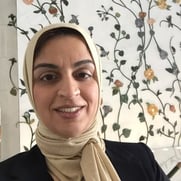February has come to an end, but now is not the time to put away the John Lewis reading passage or the Dr. Martin Luther King, Jr essay. Black History Month is not a box we check annually. Black History is American History.
Our society is one that has taught all students about the accomplishments of white men, and we can also teach all students about the accomplishments of Black men and women, too. For all students who identify as BIPOC (Black, Indigenous, and People of Color) in our classrooms, it is critical that students see themselves in the work we are doing in our classroom. For white students, it is critical to educate them about all people so that we can plant seeds of understanding.
It’s Important For Students To See Themselves In Classroom Literature, History, and Action.
We need to decentralize whiteness in our classrooms. What does this mean? It means getting all perspectives on topics in our classrooms and making content come to life for our students so they see themselves in it. For example, when we look at EL Education’s K-8 ELA curriculum, we find that histories and perspectives are given in Modules. Third graders learn about how Booker T. Washington dealt with learning challenges and excelled in Module 1. Fourth graders learn about all perspectives—White, Black and Indigenous in the American Revolution in Module 3. Later in Module 4, they learn about the perspective of Black women during the Suffragette movement as they read The Hope Chest. We aren’t teaching unilateral viewpoints.
This is easy to do using Modules that focus on Social Studies, but there are Modules that are more centered on science and nature. As educators we need to make these Modules relevant for all students. When first graders learn about “The Sun, Moon and Stars” in Module 2, we can teach them about scientists from diverse backgrounds who study space. We can also help students understand how they can see stars in their own communities.
With these Modules, students seeing themselves and their communities in the work is one piece, but a bigger piece of the work is using the Module content as a launch pad for helping students become ethical people who take action in their communities. Students can support water equity in the places they live through advocacy that teachers can encourage as they study the Module on water in third grade.When students see content as relevant to them, they want to learn more.
Planting Seeds of Understanding
When we don’t expose white students to viewpoints of color, we can run a risk of them having unilateral viewpoints. This can be dangerous for students in our classrooms and our country. Having windows to other cultures helps build empathy and caring for others. If you don’t live in a diverse community, remember this is still a diverse world. Plant those seeds of understanding.
Where Do We Go From Here?
Look at your next module. Think about, “How can I expand on this topic so that students can see themselves in the content? What can I do to use this Module as a springboard to promote Better World Learning? What support do I have in my community for activism through this Module?” Yes, this takes time and work, but this is why we became educators. Believe in yourself. See yourself. Believe in your students. See your students.
 Sarah Said is the Director of Language and Equity Programs at an EL Education School in the Chicago Suburbs. In her role, she oversees support programs for Multilingual Learners, works with others to create a community that fosters success for students from the diverse communities her school serves, helps strengthen school to community outreach, and coordinates Title grants. In the past, she has been a Director of ELL, Dean and Curriculum Coordinator. In addition to her role in her building, she is a contributor for ELL Confianza and has written a variety of blog posts online. She is a member of the #ELLChat and #ELLchat_bkClub where she helps advocate for Multilingual Learners. Follow her on twitter: @MrsSaid17
Sarah Said is the Director of Language and Equity Programs at an EL Education School in the Chicago Suburbs. In her role, she oversees support programs for Multilingual Learners, works with others to create a community that fosters success for students from the diverse communities her school serves, helps strengthen school to community outreach, and coordinates Title grants. In the past, she has been a Director of ELL, Dean and Curriculum Coordinator. In addition to her role in her building, she is a contributor for ELL Confianza and has written a variety of blog posts online. She is a member of the #ELLChat and #ELLchat_bkClub where she helps advocate for Multilingual Learners. Follow her on twitter: @MrsSaid17

